OnePlus 12
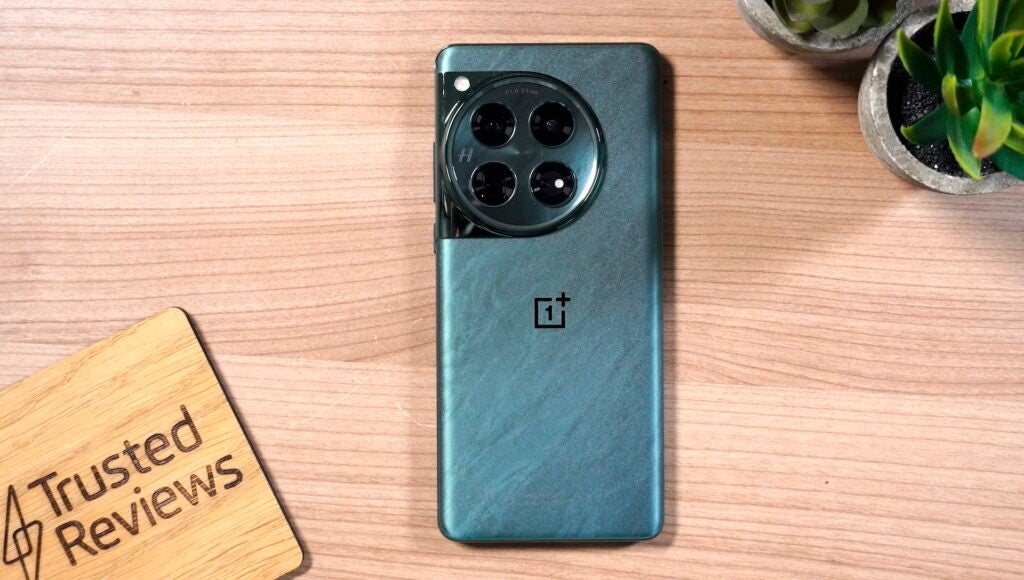
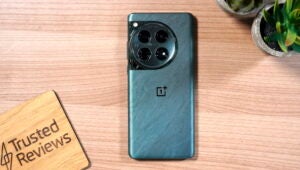
The OnePlus 12 ticks plenty of boxes, from premium display tech to capable Hasselblad-branded cameras and reliable all-day battery life. However, the hefty price hike is a tad disappointing, especially with lacklustre durability compared to similarly priced alternatives, and there’s no AI tech here either.
Pros
- Large, mega-bright curved screen
- Consistently solid camera performance
- OxygenOS is a visual treat
- Excellent battery life
Cons
- No AI features
- Performance is slower than similarly specced phones
- IP65 resistance falls short for the price
Key Features
- A great screen experienceThe 6.8-inch OLED display of the OnePlus 12 delivers a top-notch viewing and gaming experience with high-end tech like an LTPO-enabled 120Hz refresh rate, support for all kinds of HDR formats and a maximum brightness of 4500nits.
- All-day battery lifeWith Snapdragon 8 Gen 3 efficiency and a larger 5400mAh battery, the OnePlus 12 can last all day and then some, often reaching the second evening of use before needing a top-up.
- Versatile camera setupThe Hasselblad co-engineered camera setup delivers great shots in most conditions, and with the introduction of a high-res periscope lens, you can get closer to the action than ever before.
Introduction
The OnePlus 12 is the company’s top-end 2024 flagship with all the bells and whistles you come to expect from high-end smartphone tech – and then some.
It’s not only stylish but has one of the best-equipped displays around in 2024, a Hasselblad-branded camera system and long battery life, and it brings back much-requested features like wireless charging.
However, it’s also much more expensive than the £729/$699 OnePlus 11, now starting at £849/$799. The question is, does it still have that same allure, or has OnePlus tried to do too much with this year’s smartphone?
I’ve been using the OnePlus 12 for the past couple of weeks, and here are my final thoughts.
Design
- Not too dissimilar to OnePlus 11’s design
- New etched finish is eye-catching
- Alert Slider has moved position
The OnePlus 12 isn’t a complete rethinking of the flagship, sporting a very similar design to its predecessor – but considering the OnePlus 11 was quite the looker, I don’t think that’s a particular issue. Importantly, small changes to the overall design make the OnePlus 12 not only stand out compared to its predecessor, but much of the premium smartphone market.
That’s not that apparent when looking front-on, but flip the phone over and the difference is immediately apparent. The OnePlus 12 sports a rather unique pattern on the rear that’s said to be inspired by nature – with the Flowy Emerald finish, anyway.
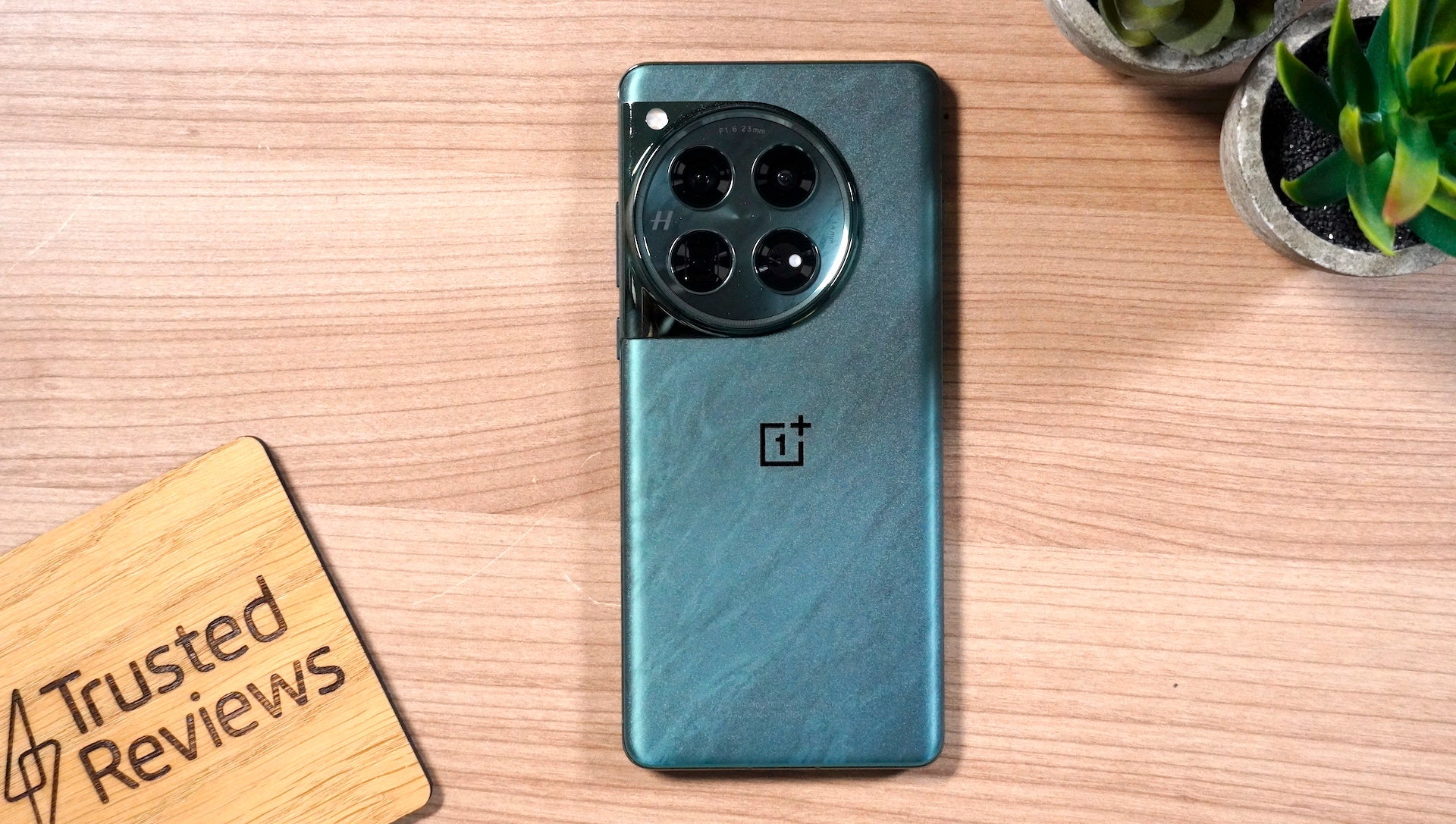
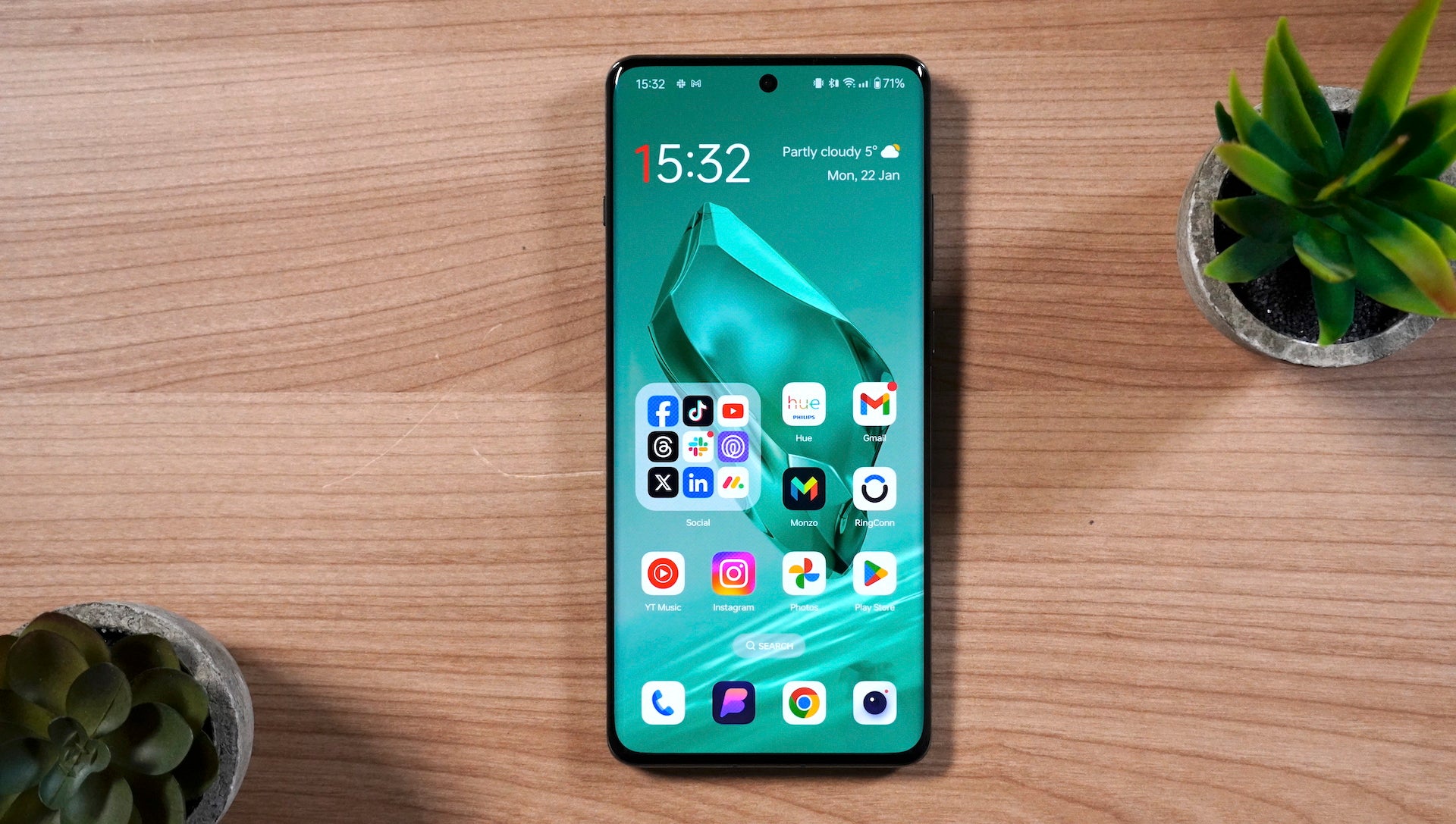
It’s not a look we’ve seen before, but the etched pattern certainly drew attention during the review period, with multiple people remarking about the look of the phone. That pattern even blends into the large circular camera housing for a more uniform look, and it perfectly matches the green aluminium frame too.
It’s worth noting that the phone is also available in a more muted black finish if you want something a little more understated, but I think that the Flowy Emerald finish will be much more popular.
On that camera bump; yes, it’s large, but I don’t think it detracts from the overall design. In fact, I think it’s fairly stylish, with a shiny metal frame that blends well into the aluminium frame. There’s also a little bit of glitter within the housing for an extra bit of pizzazz. All of this helps the OnePlus 12 to be easily identifiable because, let’s be honest, most smartphones look identical front-on.
Throw in a matte finish that does a particularly good job at negating fingerprints, along with a curved screen and rounded edges and you’ve got something that feels great in the hand. It’s not particularly svelte at 220g and 9.2mm thick, but it does feel pretty solid nonetheless.
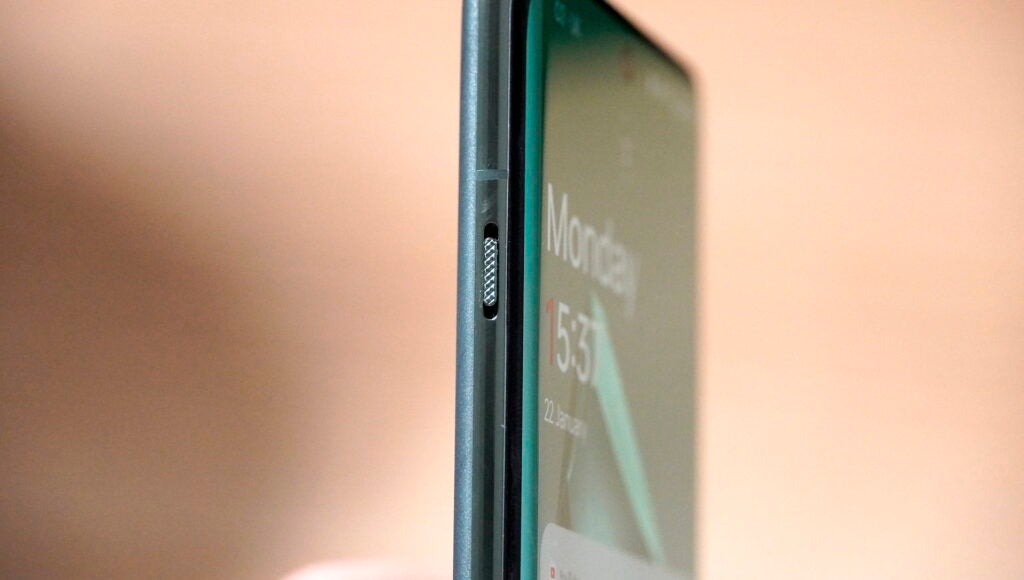
Another change to the core design of the OnePlus 12 is the placement of the fan-favourite Alert Slider. While it still works in the same way, giving you a fast and easy way to switch between Silent, Vibrate and Ring modes, it has shifted from the phone’s right to the left.
That might be a big deal if you’re a long-time OnePlus fan, but for me, it took only a day or so to get used to. In fact, as a long-time iPhone user, I actually prefer the new placement, mirroring that of the iPhone’s silent switch.
It’s not just for aesthetics either; the move was largely down to improve antennae performance, and while that’s quite hard to test, I did notice that the phone was rapid at connecting to Wi-Fi networks when hopping between stations on the tube.
There is upgraded IP65 protection to protect against dust and water ingress, but it’s still a ways off the IP68 you’ll find from competing flagships like the Samsung Galaxy S24 and iPhone 15. It’s a particularly notable weakness given the rising price of this year’s flagship.
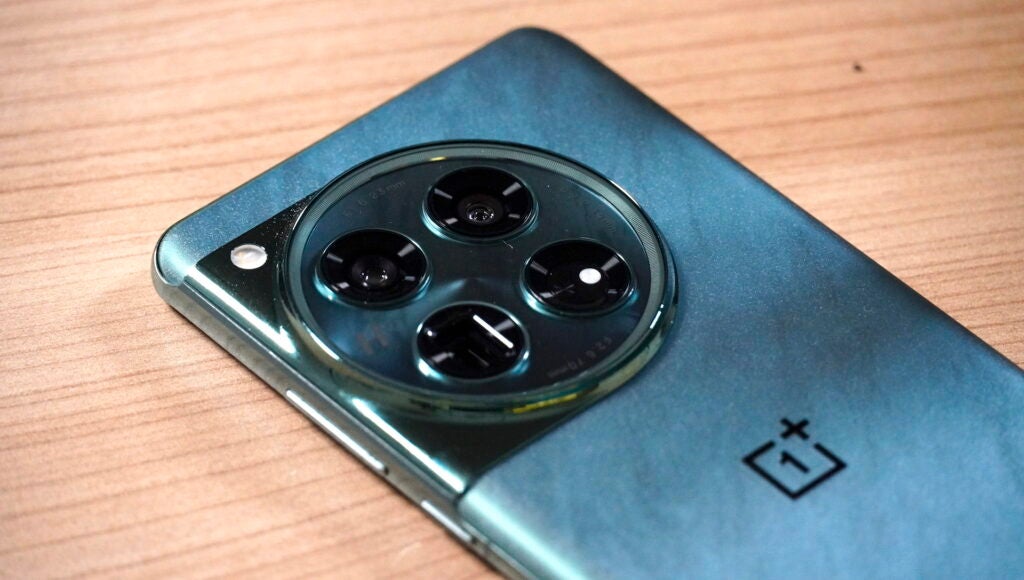
There’s also Corning Gorilla Glass 5 protection that should hopefully protect your phone from a drop or two, but again, the tech is a little long in the tooth.
You’ll also see the return of the classic IR blaster embedded in the top of the phone, allowing you to control smart home devices, fans, TVs and more. It’s a rather niche feature that OnePlus claims sees more use in the Eastern market, but it’s one that I find myself using quite often in place of searching for the remote down the sides of the sofa.
Screen
- Truly premium display experience
- 6.8-inch OLED panel, 2K resolution, 120Hz refresh rate
- 4500-nit peak brightness
The OnePlus 12’s display is a real treat for the eyes, with every bit of premium screen tech packed into the 6.8-inch panel. Let’s start with the basics; it has a 2K resolution, 120Hz refresh rate with LTPO 3.0 support that allows it to drop down to 1Hz, and a truly staggering peak brightness of 4500nits, making it an absolute delight to use in any lighting conditions.
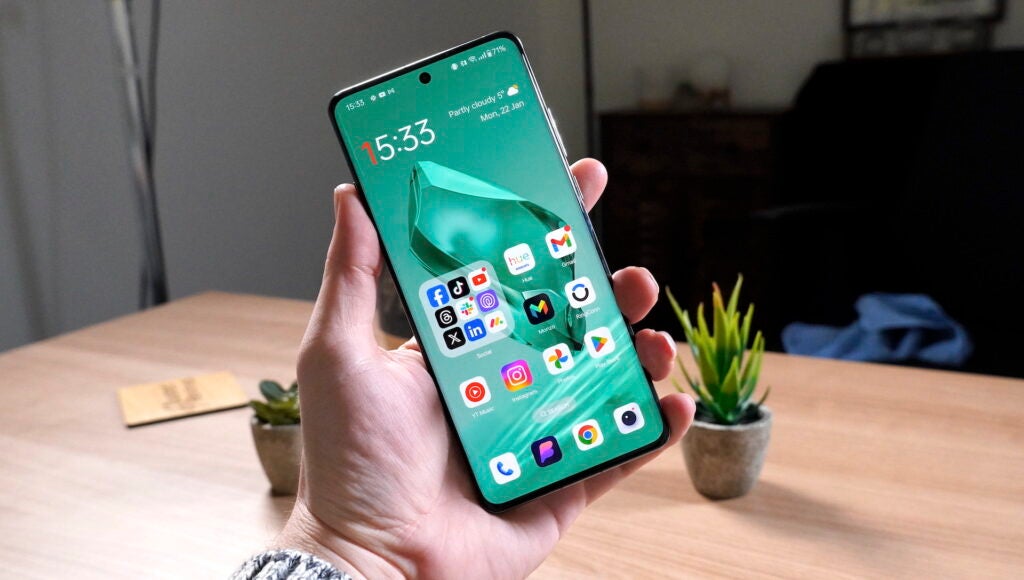
OnePlus has also taken a leaf out of Honor’s books with 2160Hz PWM dimming, active when the display’s brightness is below 70nits. It’s not going to benefit everyone, but if you find that you get eye strain when using your phone, the OnePlus 12 may negate that somewhat.
Then there’s also premium screen tech including Dolby Vision, HDR Vivid, HDR10+, the same ProXDR tech as the OnePlus Open, all powered by a dedicated PixelWorks X7 display chipset.
That’s a lot of marketing slang, but it essentially means that the OnePlus 12’s 6.8-inch OLED display is an absolute stunner regardless of what you’re up to.
The 2K resolution (which needs to be activated in the Settings app) delivers crisp visuals with not a hint of pixelation, making both movies and games look extra detailed on the device, and the colours are equally vivid. It’s a rich display experience that can boost colours slightly past natural levels, although there are multiple colour options in the Settings menu if you find it’s a little too vibrant for your taste.
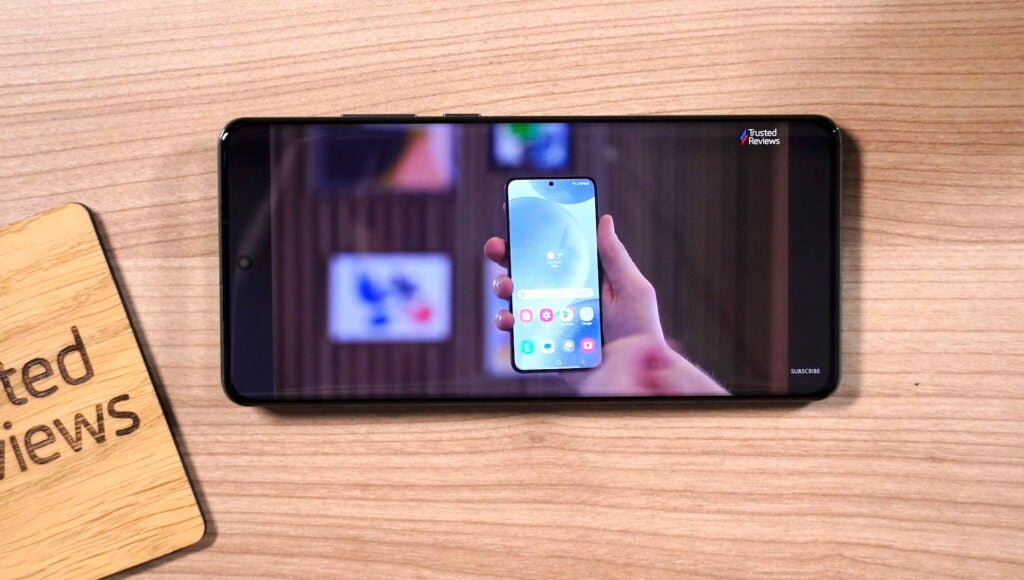
The curved nature of the display will likely be like marmite for some; it makes swipe navigation gestures feel nicer and it certainly makes the phone easier to wield than the similarly sized Samsung Galaxy S24 Ultra, but it also means there’s a slight shadow on the two long edges of the screen where it curves when looked at head-on, and as with most curved phones, the palm rejection tech isn’t quite perfect.
Whether that’s a dealbreaker will come down to personal preference, but even as someone who prefers flat screens, the curved display of the OnePlus 12 didn’t take long to adjust to.
Cameras
- Upgraded main sensor
- New 3x periscope lens for better zoom
- No AI-based photo editing
The OnePlus 12 continues the company’s partnership with Hasselblad, sporting the 4th-gen Hasselblad camera system for mobile and the software tuning that comes with it. It’s still a triple camera system, much like its predecessor, but the 48MP 2x telephoto has given way for a more capable, larger 64MP 3x periscope lens that delivers better quality zoom shots at greater distances.
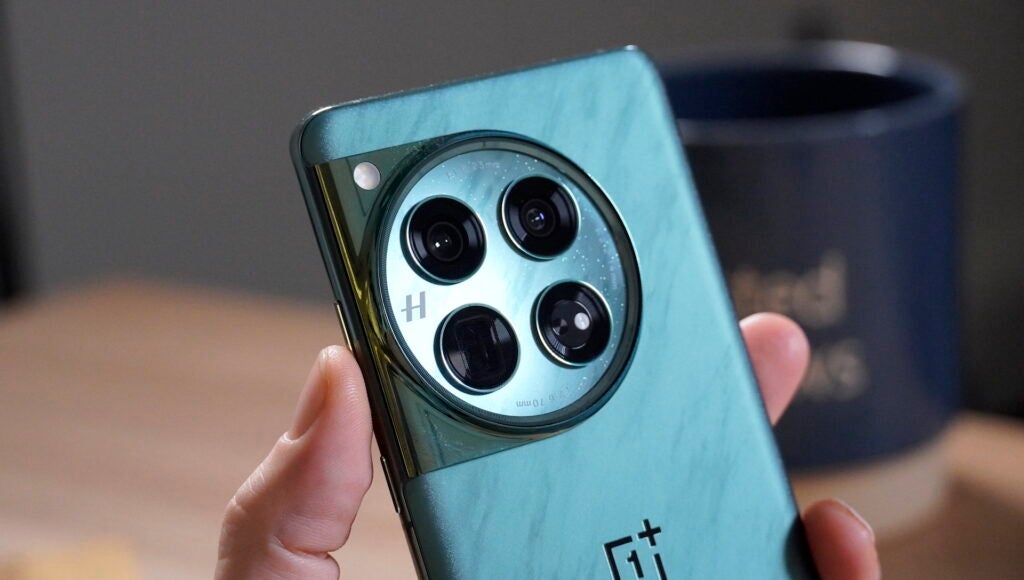
It’s a helpful upgrade as I felt the 2x telephoto of the OnePlus 11 didn’t always crop in quite as much as I’d have liked, but the new periscope lens fixes things somewhat. It’s still not quite up to the levels of zoom offered by the Samsung Galaxy S24 Ultra and iPhone 15 Pro Max, but then again, those phones are quite a bit more expensive than OnePlus’ option.
I found that, between the 3x and 6x mark, the images captured were pretty great. There was plenty of detail thanks to the pixel binning tech on offer, and with OIS, shots were usually free of motion blur.
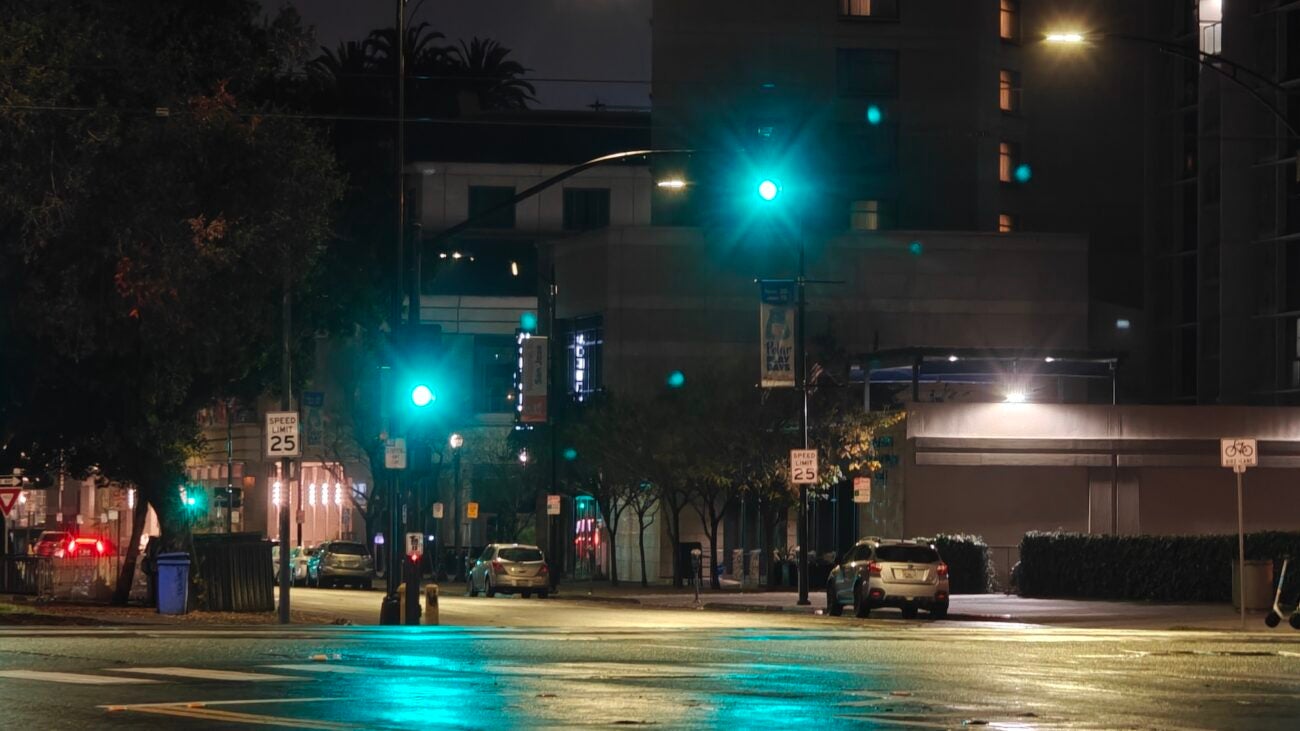


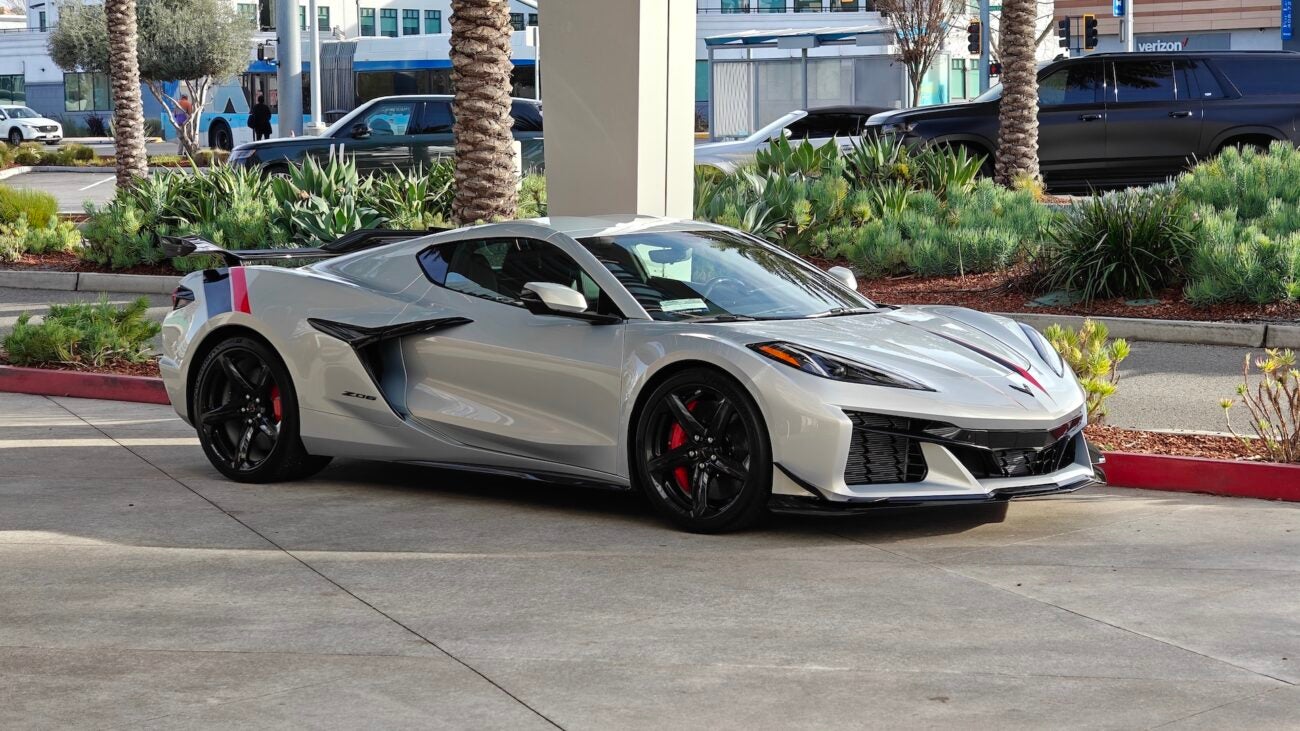




It’s not a consistent experience – anything above the 10x mark and you’ll start to see artefacting, and the 120x zoom is near unusable as with most extreme digital zooms – but stick to the lower ends of zoom and you’ll be pretty happy with the results.
The main 50MP snapper may not sound different, but it sports the same main sensor as the OnePlus Open, the Sony LYT 808. At 1/1.4-inch, it’s larger than the OnePlus 11’s main camera and boasts an improved f/1.6 aperture that, combined with OIS, delivers much better light intake in low-light scenarios.
It can sometimes brighten things a little too artificially, but by playing with the EV meter, you can get some pretty nice night shots with balanced colours and plenty of detail. Just don’t expect near night-vision-level support like you’d find from the Vivo X100 Pro – it needs some source of light to do its job.

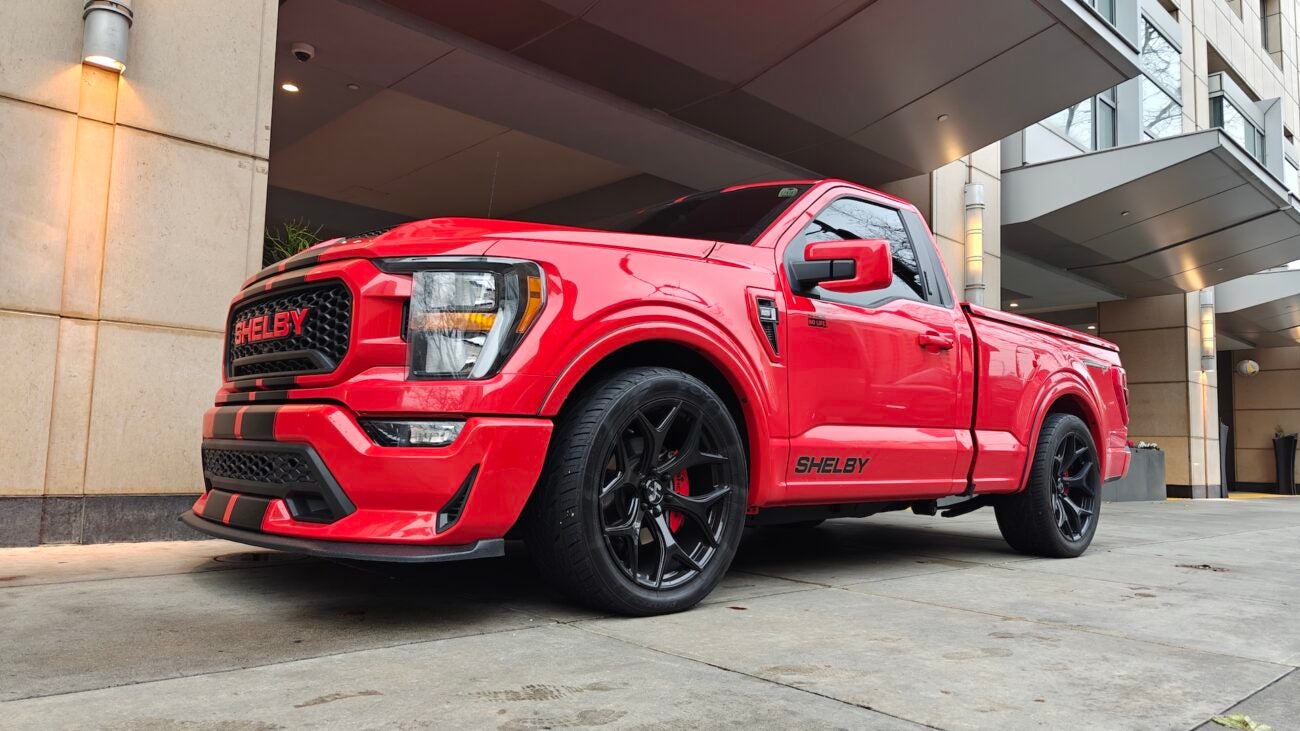








Daytime shots are even more impressive, with great dynamic range and vibrant colours that make images pop. It can even easily handle extreme backlighting, although those shots can look a little artificial depending on how aggressive the post-processing is.
Rounding out the trio is the same 48MP 114-degree ultrawide lens as the OnePlus 11. It’s still a solid ultrawide lens well suited to architecture, landscapes and group shots, and it does a surprisingly good job in low-light scenarios too – a surprise considering the latter isn’t usually a strong point of ultrawides.
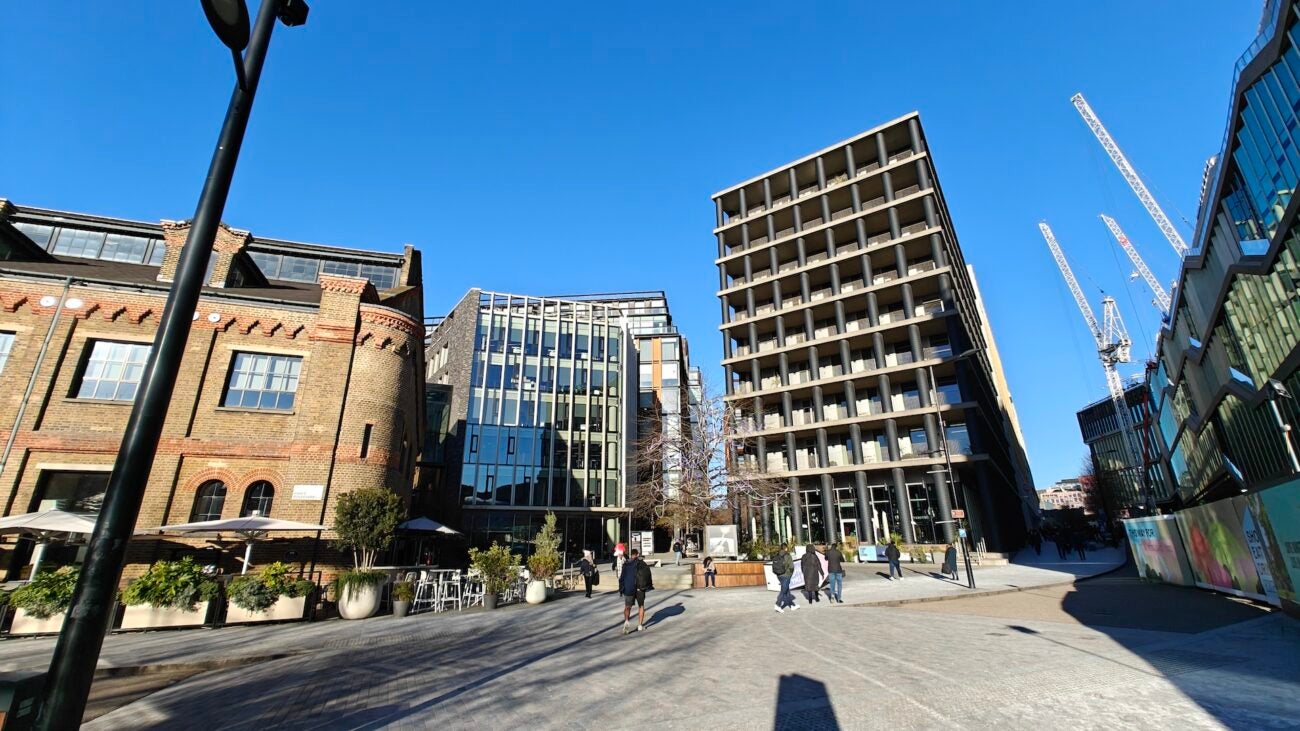




The selfie camera has been upgraded from 16MP to 32MP, although it’s still your basic fixed-focus snapper. It has the potential to take some great selfies, but the colour seems a little washed out compared to the rear snappers, so I’d probably limit its use to Snapchat and video calls.

You don’t get any cool AI-based photo editing tech like the Google Pixel 8 or Samsung Galaxy S24, however. Maybe with OxygenOS 15 in a year? Who knows…
Performance
- Overclocked Snapdragon 8 Gen 3
- Up to 16GB RAM and 512GB storage
- New cooling chamber helps keep performance consistent
The flagship experience continues when it comes to processing power, sporting Qulacomm’s latest Snapdragon 8 Gen 3 chipset along with up to 16GB of LPDDRX5 RAM and 512GB of UFS 4.0 storage.
OnePlus further cemented its performance gains with CPU vitalisation that allows the phone to monitor and control the temperatures of each core of the chipset, and there’s also a dual-cryo velocity cooling system that should move heat away from the CPU and other components for consistent performance.
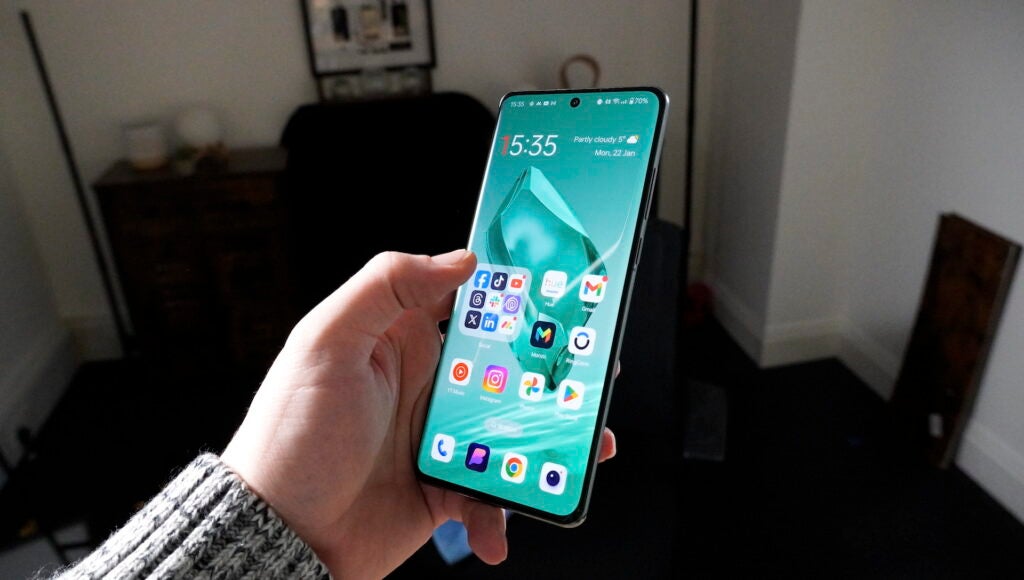
However, benchmark testing reveals that, even with the high-performance mode enabled, the OnePlus 12 can’t compete with dedicated gaming phones like the ROG Phone 8 Pro, even with a fairly similar spec.
The benchmark results – particularly in the CPU department – are more in line with Snapdragon 8 Gen 2-equipped competitors than those with the Gen 3 – so it looks like OnePlus’ vitalisation tech may hinder, rather than help, overall performance.
That said, you’re not likely to notice that in real-life conditions, nor will you notice the phone getting that hot – even during our stress test benchmark, the phone only got slightly warm at the sides.
Despite the slightly lacklustre numbers, that still translates to rapid everyday use, with the OnePlus 12 handling just about anything I could throw at it during the time I spent with it. That ranged from scrolling through media-heavy apps like Instagram and Threads to playing games like Survivor.io and even quickly exporting a fun 30-second edit of a recent trip using CapCut.
OnePlus doesn’t use the same aggressive battery-saving techniques as the likes of Honor and Xiaomi either, meaning that app notifications were consistent throughout my time with the phone – and that’s without locking any apps to stop them from closing.
Taking it one step further, OnePlus will soon add a new ‘Strong Lock’ functionality that’ll allow you to keep six apps in RAM for up to 72 hours, meaning the apps will always be exactly as you left them with no re-loading when re-opening the app. There’s no word yet on when it’ll arrive, but it does sound like a handy feature indeed.
Software
- Android 14 with OxygenOS 14
- Hugely customisable interface
- Great long-term software support
The OnePlus 12 comes with the latest form of Android, Android 14, along with the company’s OxygenOS UI on top. While the inclusion of a custom Android skin can sometimes be more of a hindrance than a help to the overall experience – we’re looking at you, Xiaomi – OnePlus’ implementation is one of the best around.
Everything about OxygenOS 14 on the OnePlus 12 feels polished. You’ve got an easy-to-understand interface with very little difference to stock Android in terms of the core layout – the Settings menu looks pretty stock, and the notification shade functions in the way you expect – and where things do differ, they’re generally for the better.
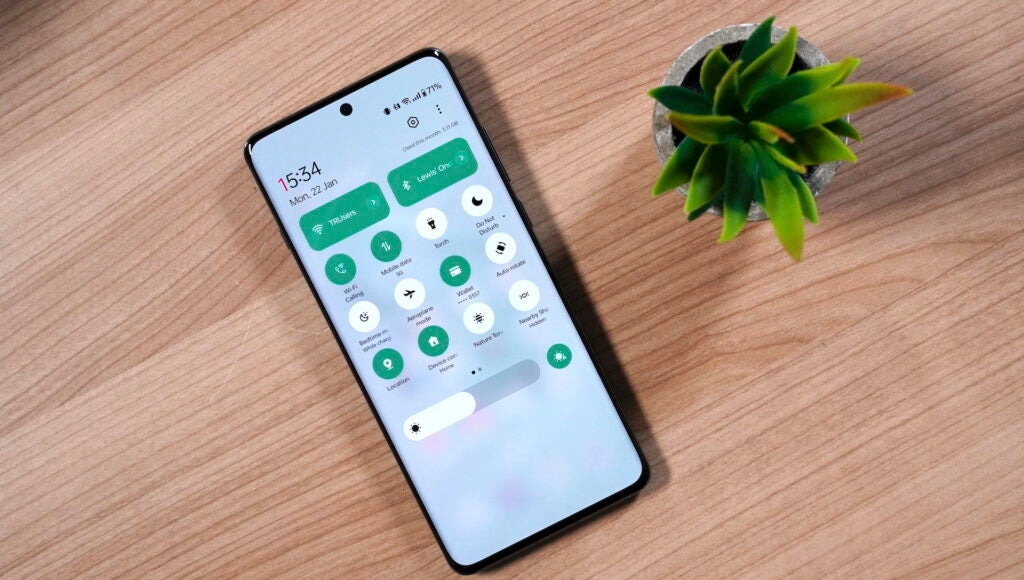
That includes a swathe of custom ringtones and text tones to choose from, broken down into several categories, along with the ability to customise not only the colour scheme of the UI to match your wallpaper but the font, icons and just about everything else you could imagine – and that also applies to the lock screen and always-on display.
As noted earlier, OxygenOS does a better job than many when it comes to battery optimisation too, with no aggressive app optimisation or a notable delay in receiving notifications.
There are also handy features in the phone’s gallery app that’ll automatically pixelate sensitive data in photos before sharing them on social media and more, along with elements like Zen Space, HyperTouch and HyperRendering gaming tech. Honestly, there are too many features and functions to mention here, but it feels like one of the more feature-packed iterations of Android that I’ve used recently.
The only area where it’s lacking is in the AI department. One of the biggest draws of the Snapdragon 8 Gen 3 is that it can run generative AI tasks all on-device. Samsung has taken this in its stride with AI-powered transcription, translation and even photo editing tech, but there’s nothing like that found here – and that’s more than a little disappointing.
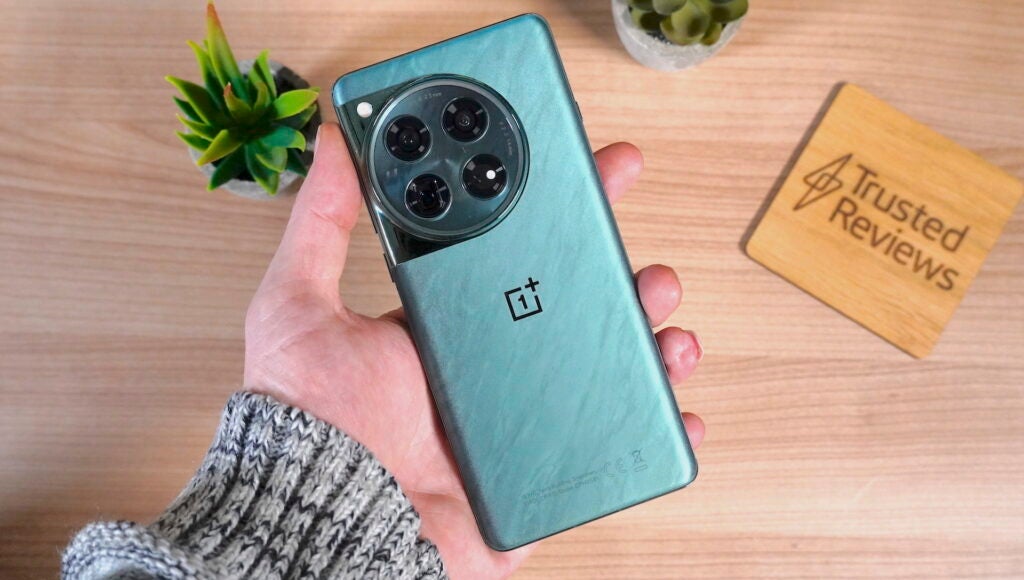
However, there’s a possibility it’ll make an appearance in future with OnePlus promising four years of OS upgrades and five years of bi-monthly security patches. It’s not quite up to the standard of Google and Samsung with the updated seven years of OS upgrades, but it’s still fairly competitive when looking at the rest of the Android market.
Battery life
- 5,400mAh battery
- Easy all-day battery life
- Full charge in around 30 minutes
The OnePlus 12 builds upon the solid battery life of its predecessor not only with a more power-efficient chip in the form of the Snapdragon 8 Gen 3, but also with a larger 5,400mAh battery that’s larger than the likes of the Samsung Galaxy S24 Ultra and iPhone 15 Pro Max.
It’s not quite as large as the 5,500mAh cell of the OnePlus 12R, but there’s likely to be little difference in real-world use with just 100mAh in it.
That all said, the OnePlus 12 is certainly an all-day device for most people. On regular days with a mix of calls, taking photos, scrolling through social media and replying to WhatsApps, I’d get to bed with around 50-60% left in the tank. On those days, the OnePlus 12 lasted well into a second day of use, only requiring a top-up on the second evening.
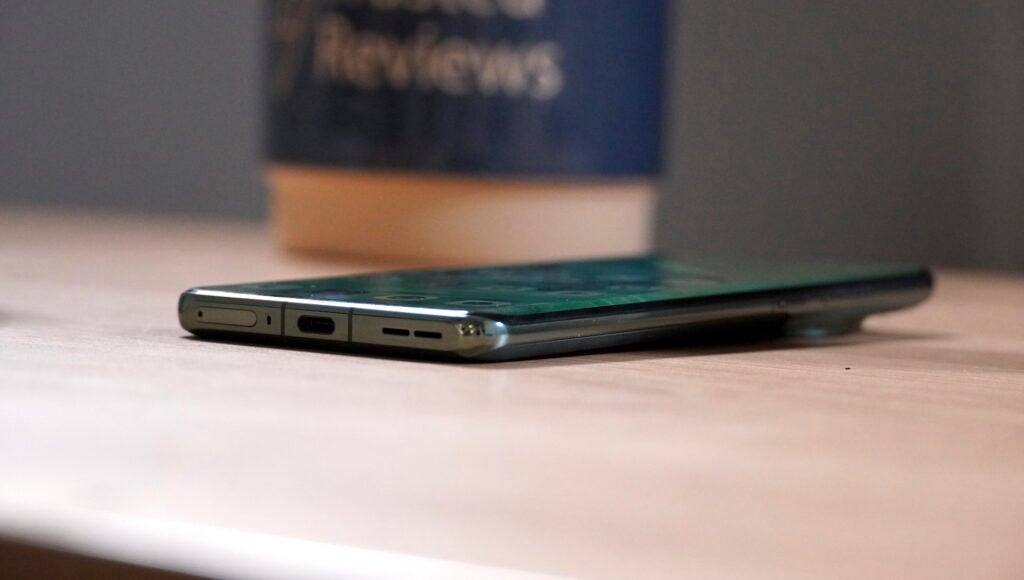
However, that experience isn’t quite as consistent as I’d like. On an (admittedly phone-heavy) trip to San Jose with more camera use, texting and Google Maps use, it turned into a one-day phone, with around 15-20% left in the tank by the time I got to bed. Still, that is with 6+ hours of screen-on time on average, so I’m happy to let that slide.
It’s not as big a deal as it would be with other phones as, with 100W SuperVOOC charging, the charging experience is best described as rapid. I could quickly top up the phone during a night flight back to London while I read my Kindle, and after just two chapters, it was nearly full.
More specifically, the OnePlus 12 can manage a full charge in 26 minutes, with 50% taking just 13 minutes. There’s also 50W AirVOOC wireless charging – one of the key omissions of its predecessor – though you’ll need a specific OnePlus charger to take advantage of such rapid charge speeds. You’ll get a 100W SuperVOOC charger in the box, but the wireless charger is an optional accessory.
Latest deals
Should you buy it?
You want a solid all-rounder
With a lovely design, great cameras, a top-end screen and all-day battery life, the OnePlus 12 offers a great all-round experience that most will be happy with.
You want AI functionality
Despite using the Snapdragon 8 Gen 3 that can run GenAI tasks on-device, the OnePlus 12 doesn’t take advantage of it in any way.
Final Thoughts
The OnePlus 12 is a polished attempt at a best phone entry that certainly looks the part with a unique etched pattern rear, but it’s the tech that truly steals the show.
The 6.8-inch curved OLED display is about as premium as they come with a 2K resolution, 120Hz LTPO tech and support for just about every HDR format out there with a maximum brightness of a whopping 4500nits that makes it among the brightest around.
There’s also the Hasselblad collaboration, with an upgraded trio of rear lenses that improve upon the OnePlus 11’s offering. That comes not only in the form of a larger primary camera sensor, but a more capable 3x periscope lens that makes it a much more versatile shooter than it once was.
There’s also solid battery life thanks to the Snapdragon 8 Gen 3 and a 5,400mAh cell that’ll get you at least a day, if not two days, out of a charge.
It’s not all positive though; the 8 Gen 3 doesn’t seem to be quite as powerful as the competition in benchmarks, nor does OnePlus take advantage of the GenAI capabilities of the chipset. The phone is also a little lacklustre in terms of protection, capping out at IP65 and Gorilla Glass 5, and at £849/$799, it’s a huge jump on the £729/$699 RRP of its predecessor.
Still, if you’re looking for a great all-in-one package, I think the OnePlus 12 has a lot to offer – it’s just not the ‘flagship killer’ it used to be.
How we test
We test every mobile phone we review thoroughly. We use industry-standard tests to compare features properly and we use the phone as our main device over the review period. We’ll always tell you what we find and we never, ever, accept money to review a product.
Find out more about how we test in our ethics policy.
Used as a main phone for over a week
Thorough camera testing in a variety of conditions
Tested and benchmarked using respected industry tests and real-world data
FAQs
Yes, you’ll get a 100W SuperVOOC charger in the box alongside the OnePlus 12.
It is, but with an IP65 rating, it’s behind the dust and water ingress protection of similarly priced flagships.
Trusted Reviews test data
Full specs
The post OnePlus 12 appeared first on Trusted Reviews.
Source Trusted Reviews ,Home Appliances Reviews


No comments